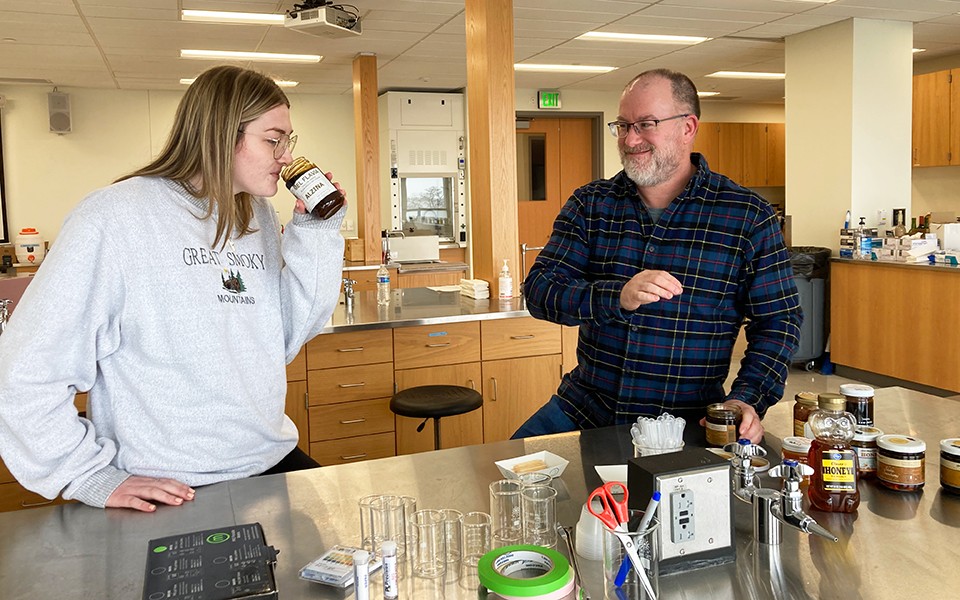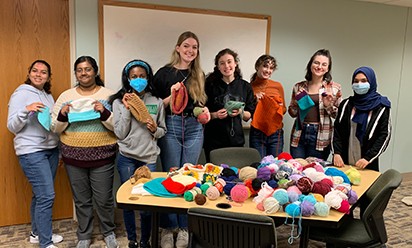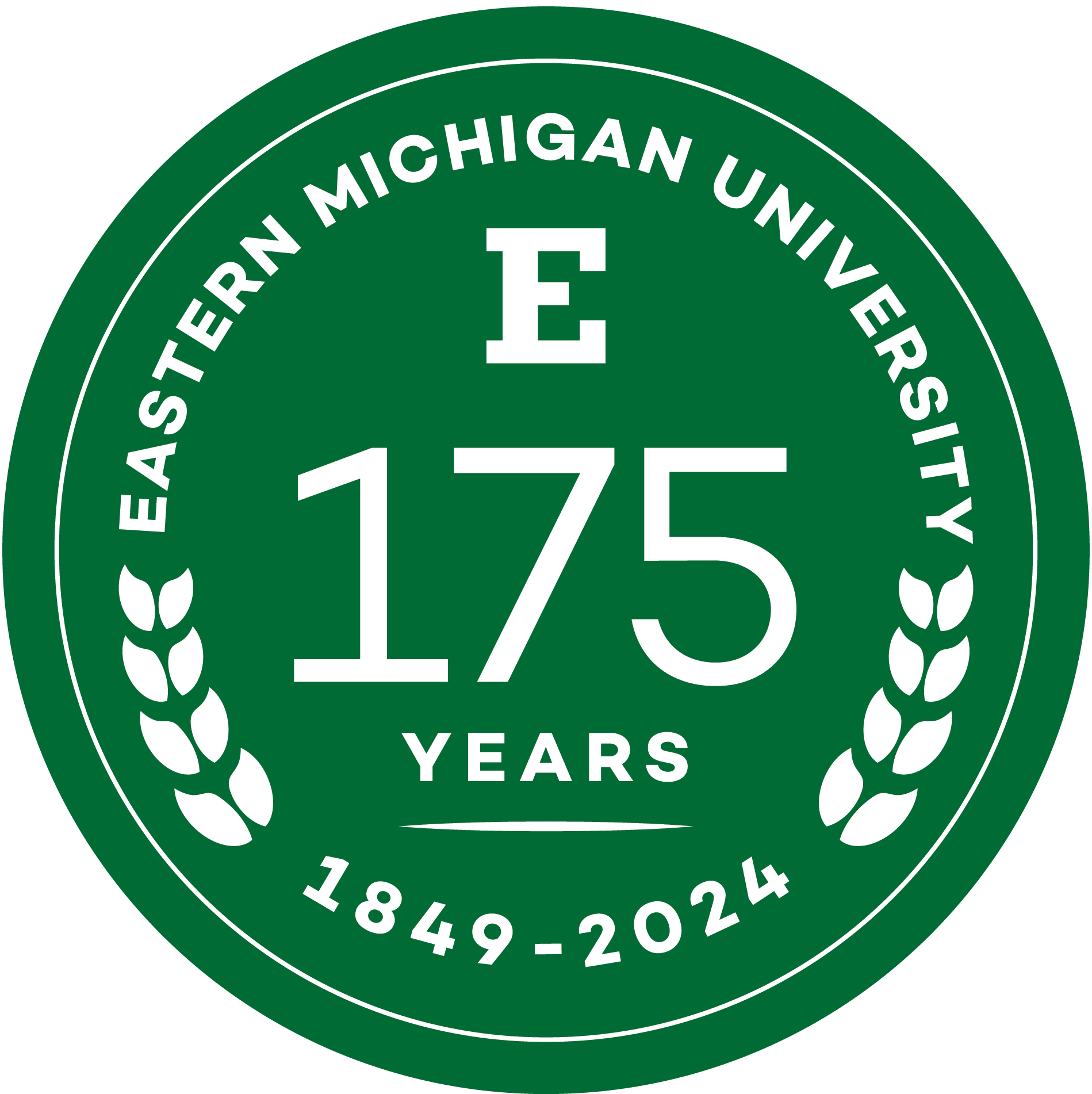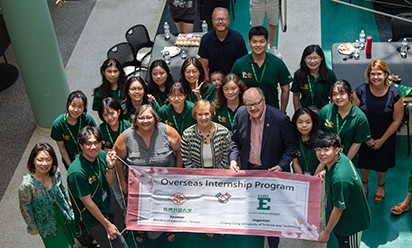EMU researchers are chemically “fingerprinting” different varieties of honey
The team is working towards picking up chemical cues in honey to tell the botanical sources of the sweet treat

YPSILANTI — While Michigan is well-known as a leader in craft brewing, its status as a vanguard in the production of mead—made from fermented honey—is becoming more visible. And like fancy chefs who want to know the origins of every ingredient in their signature dishes, mead-makers are increasingly interested in knowing everything about the honey they use, right down to which plants the bees visited on their daily rounds. Enter EMU chemistry professor and amateur mead-maker Cory Emal, Ph.D. (Emal is also the coordinator of EMU's Fermentation Science program.)
Leading a team of colleagues and students, Emal is developing a new way to analyze the unique chemical “fingerprint” of honey varieties. The goal of the research is a fast and robust test that will yield a detailed history and provenance of the sweet syrup.
Currently, it can be hard to verify claims on a label and there have been documented instances of honey fraud. A specific variety of honey can be adulterated with other varietals or even with corn or rice syrup. In one case, bees harvesting from the New Zealand mānuka plant made 1,700 tons of honey, but more than 10,000 tons of mānuka honey were sold.
Our five senses can identify honey to a certain point. In Emal’s sensory analysis class, students learn to interpret the unique tastes and aromas that distinguish one honey from another. For instance, meadowfoam honey has a distinct vanilla flavor, while buckwheat honey can be malty or minty. Varieties also range in color from pale yellow to deep molasses.
Brewers and chefs have to trust their senses and the honey labels for reassurance they are getting what they want, but most differences are subtle enough to confuse even the most discriminating palette. The best alternative is a microscopic analysis of pollen grains, a process Emal calls “expensive and labor intensive.”
In a new approach, Emal and his colleagues use nuclear magnetic resonance, or NMR, to pull out subtle chemical differences in honey. An NMR machine works like a magnetic resonance imaging (MRI) machine, but “instead of looking at somebody's knee, we're looking at chemical molecules,” explains associate professor of chemistry Gregg Wilmes, Ph.D. “It's probably the most powerful tool that we have to figure out the structure of molecules, especially organic molecules.”
A number of EMU students have been involved in the project. Undergraduates Alia Frederick, Aubrey Martin, and Maggie McCullough came up with the best sample preparation method and ran the initial data collection on the NMR. Grad student Justin Norris dug through the dizzying spectral data and figured out a good way to process the data. Norris also came up with an organizational method to sort data and start building the spectral honey variety library.
“Every molecule is going to have its own distinct pattern,” says Wilmes. “What we are trying to do is use this to figure out the patterns in honey.”
The team ran five honey varietals through the NMR looking for distinct patterns of peaks in the readout. On first look, the results looked very similar to those for the sugar molecules. “Where we see the differences is when we really zoom in,” says Emal. “Here's where we can start to see the minor compounds. These are the things that are going to be that signature for the individual types of honey.”
To see if these smaller peaks could tell the difference, Emal and Wilmes enlisted the help of biology lecturer Maria Goodrich, who ran the results through statistical analysis to pull out the parts that best represent a certain honey variety. They found that the five honeys tended to group together by variety. Their work is in the early stages, but so far there seems to be a distinctive chemical fingerprint that can separate one honey from another.
Eventually, they would like to build a library of the chemical traits of honey. As they build their catalog, they hope to be able to tell whether bees visited an orange grove in California, Florida, or Panama. “Even from season to season, because we don't know what effects climate change is going to have over the years on honey traits,” Emal says. “We want to be able to build a big enough library of trusted samples, so that we have a better idea of the provenance of the honey.”
Visit the EMU Department of Chemistry website to learn more about program offerings and research projects.
About Eastern Michigan University
Founded in 1849, Eastern is the second oldest public university in Michigan. It currently serves more than 14,000 students pursuing undergraduate, graduate, specialist, doctoral and certificate degrees in the arts, sciences and professions. In all, more than 300 majors, minors and concentrations are delivered through the University's Colleges of Arts and Sciences; Business; Education; Engineering and Technology; Health and Human Services; and its graduate school. National publications regularly recognize EMU for its excellence, diversity, and commitment to applied education. Visit the University’s rankings and points of pride websites to learn more. For more information about Eastern Michigan University, visit the University's website. To stay up to date on University news, activities and announcements, visit EMU Today.
March 22, 2023
Written by:
Sarah Derouin
Media Contact:
Melissa Thrasher
mthrashe@emich.edu
734-487-4401
More Stories

EMU Honors Crochet and Knitting Club ties the community together through acts of service.

Southeast Michigan Stewardship Coalition at Eastern Michigan University appoints new leadership.




